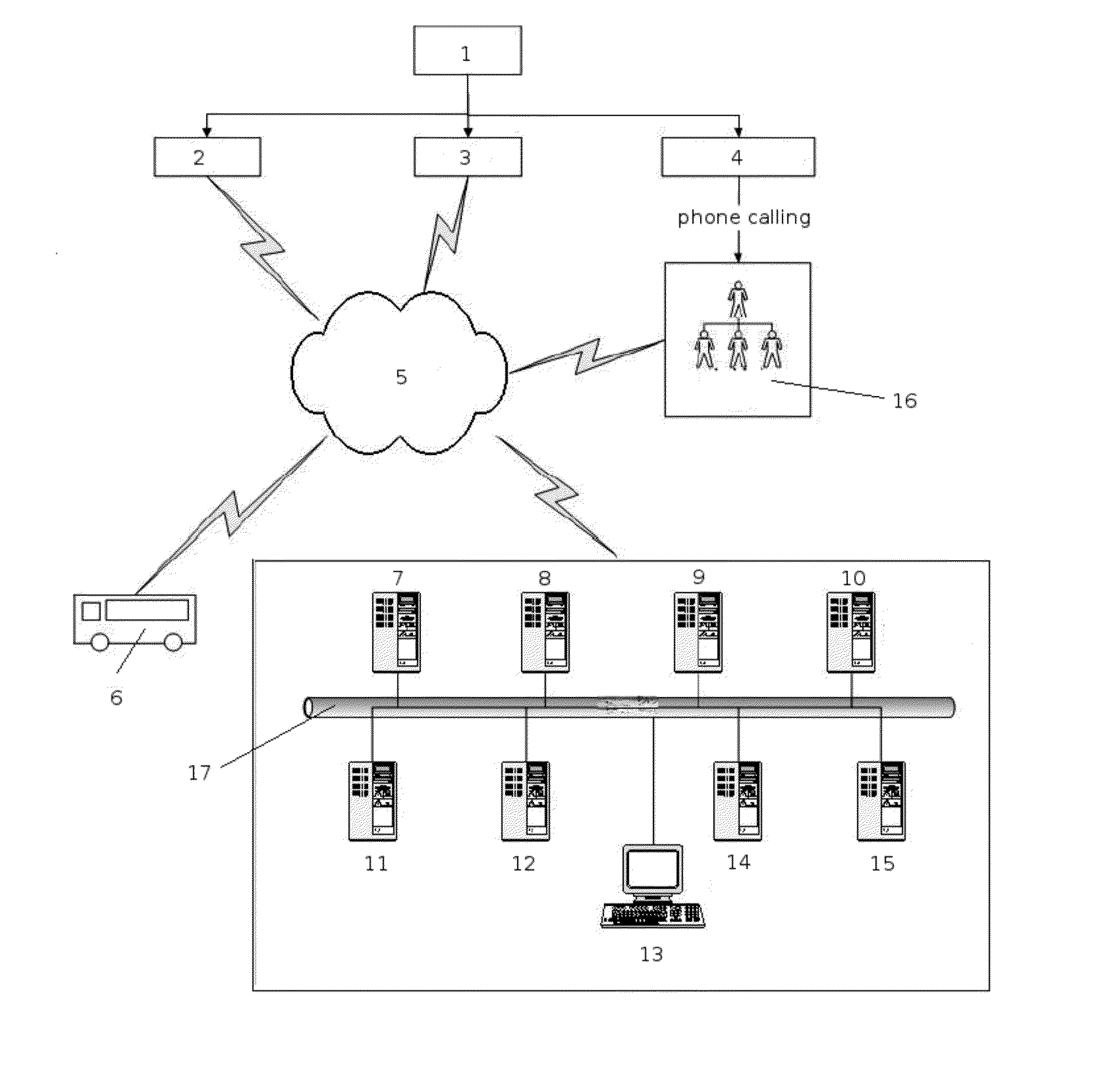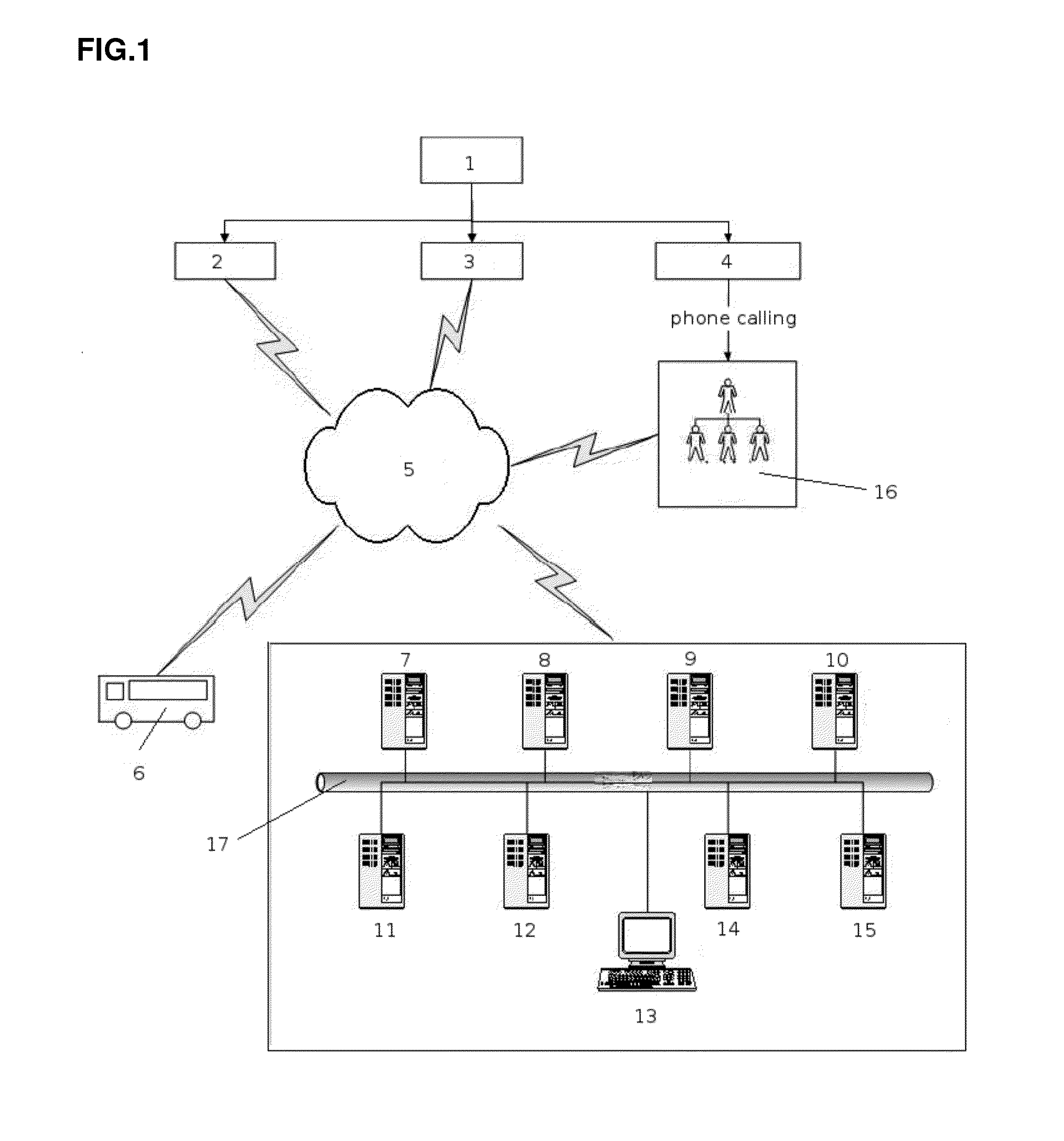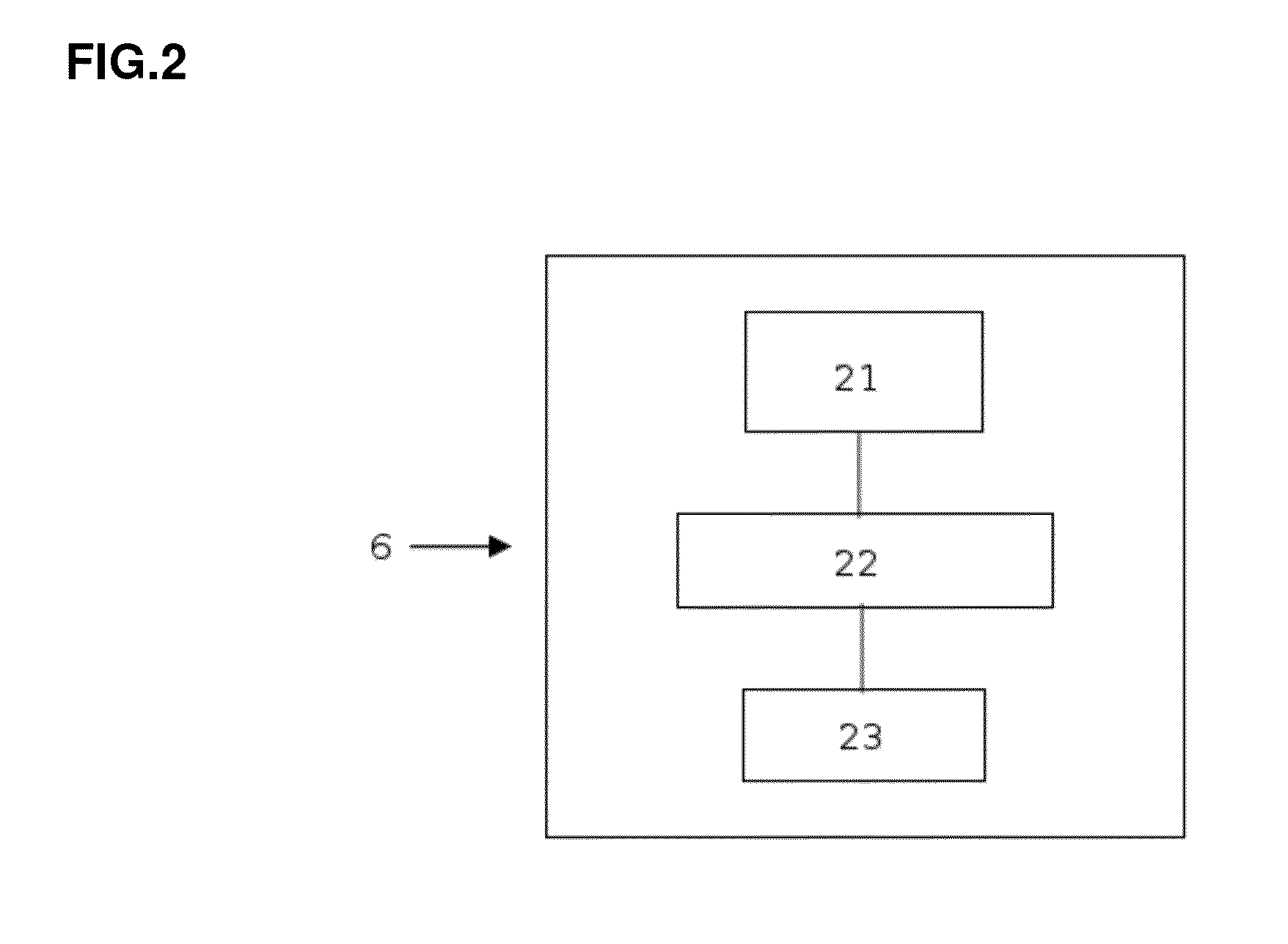Intelligent urban public transportation system oriented to passenger travel and implementation method thereof
a smart urban public transportation and passenger technology, applied in the direction of instruments, analogue processes for specific applications, electric/magnetic computing, etc., can solve the problems of inability to provide assistance in accurate planning and forecasting of the transit system, the design of the system does not consider how to obtain actual real-time demand, and the existing transit planning software cannot provide good results in actual applications
- Summary
- Abstract
- Description
- Claims
- Application Information
AI Technical Summary
Benefits of technology
Problems solved by technology
Method used
Image
Examples
Embodiment Construction
[0043]Shown in FIGS. 1 to 4, a passenger behavior oriented smart urban public transportation system is disclosed as an embodiment of the present invention, which includes a field system 6 and a control center 18 controlling the field system. The field system is connected to the control center by a wireless communication means. The control center is for receiving requests from passengers for a ride, generating a route and communicating the route to the field system. The vehicle of the field system will travel along the route received from the control center. As the vehicle moves towards the passenger, the control center also send the route information as the feedback to the passenger who submitted the request.
[0044]The control center includes a scheduling server 12, a web application server 11, a geographic information server 14, a route management server 7 and a passenger itinerary management server 8. The web application server is connected to the geographic information server, rec...
PUM
 Login to View More
Login to View More Abstract
Description
Claims
Application Information
 Login to View More
Login to View More - R&D
- Intellectual Property
- Life Sciences
- Materials
- Tech Scout
- Unparalleled Data Quality
- Higher Quality Content
- 60% Fewer Hallucinations
Browse by: Latest US Patents, China's latest patents, Technical Efficacy Thesaurus, Application Domain, Technology Topic, Popular Technical Reports.
© 2025 PatSnap. All rights reserved.Legal|Privacy policy|Modern Slavery Act Transparency Statement|Sitemap|About US| Contact US: help@patsnap.com



